How to Build Winning Marketing Strategies for Startups
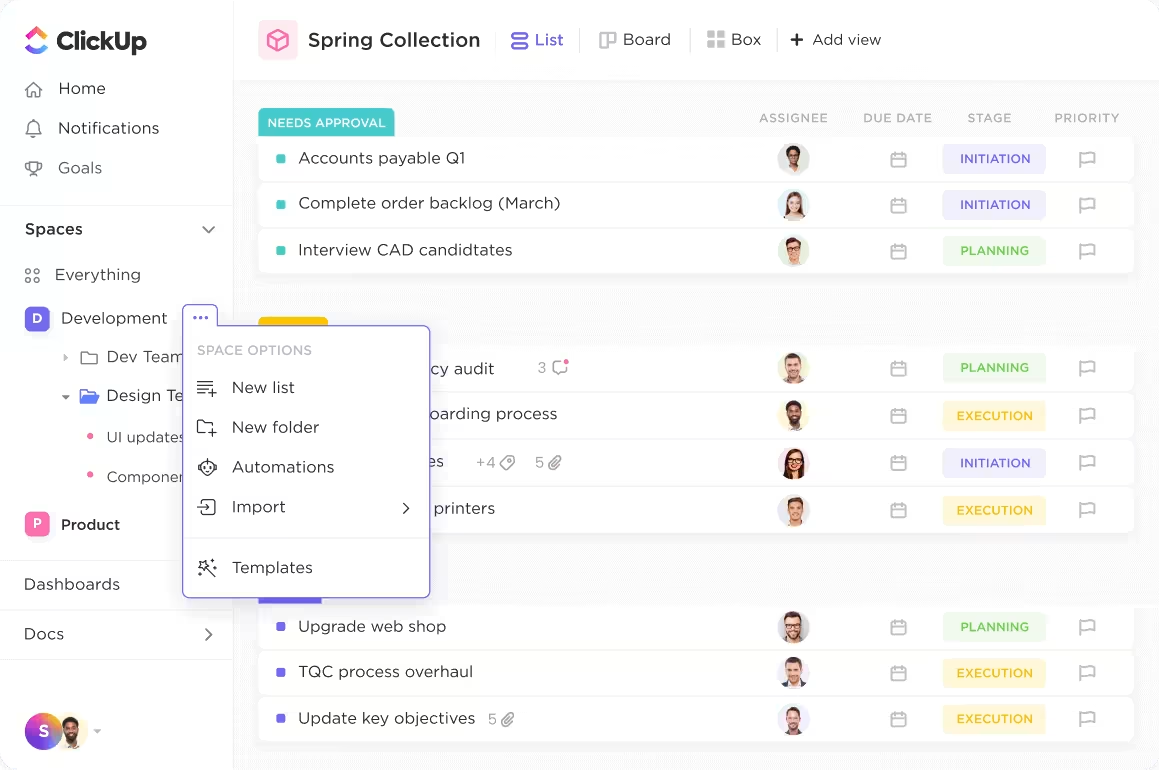
Sorry, there were no results found for “”
Sorry, there were no results found for “”
Sorry, there were no results found for “”

Are you a founder looking to reach your target market on a small budget? Or a startup marketer pouring resources into campaigns that don’t deliver?
42% of companies use digital marketing even without a strategy. If you are a part of this percentage, you need a focused plan.
Without clear marketing strategies for startups, efforts scatter, and budgets evaporate. Targeted traditional and digital marketing strategies can drive leads and growth on a budget.
In this guide, we’ll explore some of the best marketing approaches for new businesses. We’ll show you how to craft step-by-step marketing strategies for startups and discover how ClickUp supports you in this.
The Strategic Marketing Plan Template in ClickUp helps you map out your entire marketing strategy—from goals and target audience to key campaigns and performance metrics.
With built-in tasks, timelines, and customizable views, it’s perfect for aligning your team and executing marketing plans with clarity and speed.
Marketing initiatives are essential for startups to gain visibility, drive growth, and guide strategic decisions. Let’s take a closer look at how marketing can make a difference.
Here are some core tactics that every early-stage company must master to attract customers, drive growth, and outpace competitors.
Productizing your highest-value service simplifies positioning and enables repeatable processes. Clients know exactly what they’re getting and at what price, reducing negotiation overhead and accelerating sales cycles.
It turns bespoke work into a scalable offer, decoupling revenue growth from billable hours. This approach can increase client lifetime value by 20–40% through clear renewals, with cross-sell and upsell paths.
Crucially, it provides predictable cash flow, allowing you to invest confidently in demand-generation tactics like Google ads or search engine optimization (SEO). For a step-by-step framework, see our product marketing strategy guide, which walks through defining scope, packaging, and go-to-market workflows.
📌 Example
DesignJoy’s founder, Brett Williams, launched ‘Unlimited Design’ in 2017, offering unlimited graphic design requests for a flat monthly fee.
Starting with minimal costs, he acquired the first 100 customers via Twitter and Dribbble Outreach, fine-tuned his onboarding process in a shared Trello board, and scaled to $145K in MRR (≈$1.7M ARR) by June 2024—all with no external funding.
This productized service clearly defines scope, pricing, and outcomes, making the buying decision frictionless.
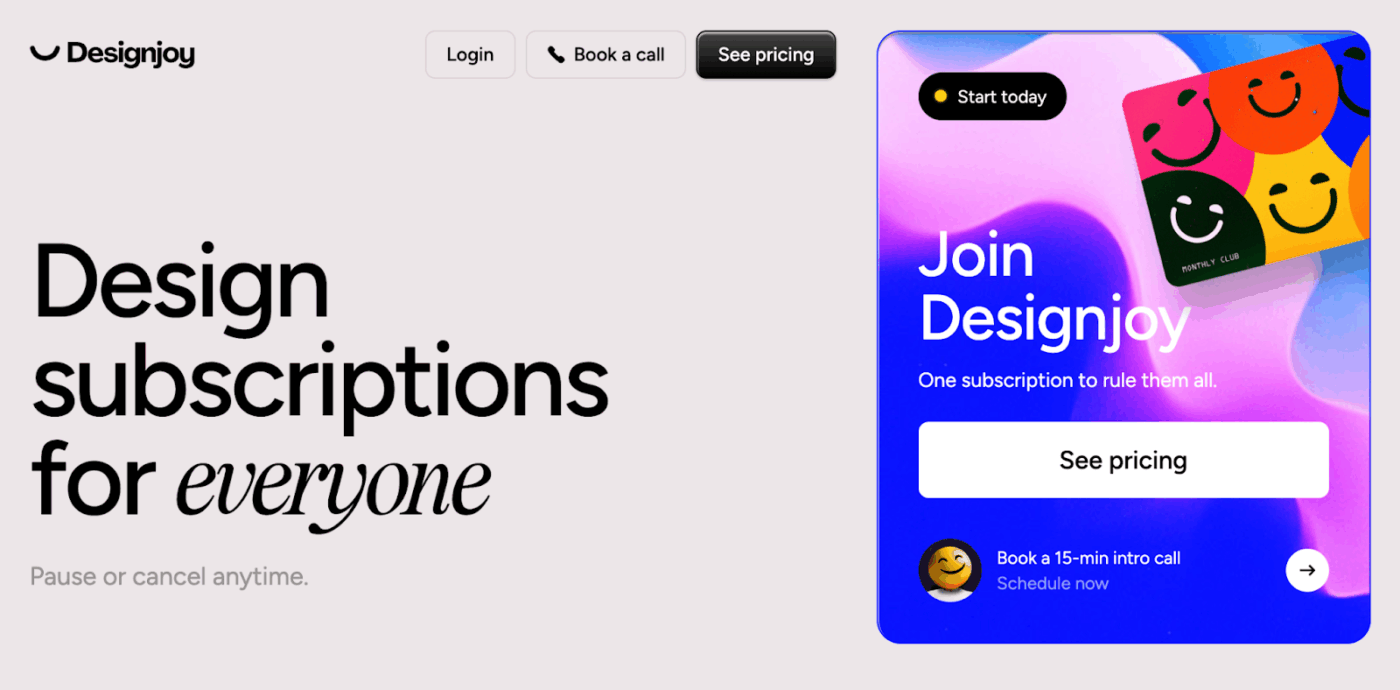
A well-structured marketing plan ensures cross-functional alignment on goals, budgets, and timelines, eliminating silos between sales, product, and support. Embedding a marketing playbook into your process means that every campaign, channel, and persona has clear ownership, checklists, and performance criteria.
When your team can reference a single source of truth for priorities and tactics, it prevents duplicated efforts. Also, it clarifies dependencies and accelerates decision-making, which is critical for high-velocity, competitive markets.
🧠 Fun Fact: 66% of social media marketers say that funny content works best for their brand, followed by relatable (63%) and trending (59%) posts.
Content marketing is one of the most cost-effective ways for startups to build trust, attract an audience, and establish authority. Instead of pushing sales messages, create content that solves real problems, answers questions, or inspires your target audience.
Blog posts, videos, newsletters, podcasts, and even social media threads can showcase thought leadership while subtly educating potential customers about the product. Over time, this content becomes valuable—generating organic traffic, supporting SEO efforts, and nurturing leads long before a sales conversation begins.
Unlike paid advertising, which stops the moment you stop spending, content has a compounding return. Consistent content output helps startups become recognized experts in their domain, building brand equity and trust without a massive marketing budget.
This approach also supports other strategies like SEO, lead generation, and email marketing, making it a foundational growth lever for lean teams.
📌 Example
A standout case is how Drift, a conversational marketing platform, built its brand. Instead of traditional marketing, Drift focused on creating a new category of marketing, publishing content that challenged the status quo. They popularized the term “conversational marketing” through books, a popular blog, and a podcast, positioning themselves as the definitive experts.
By creating and owning the conversation around this new approach, they educated the market and made their product the essential solution for anyone wanting to adopt this new, more effective strategy. This approach built immense authority and a multi-million dollar brand that Salesloft eventually acquired.
📖 Also Read: How to Create a Content Marketing Management Plan
Automating personalization at scale frees up creative bandwidth. AI-powered experiments continuously optimize copy, timing, and segmentation, delivering incremental lifts of 20–30% in key channels like email, SMS, and push notifications.
This accelerates test velocity from weekly to hourly, driving faster insights and compounding ROI. The time savings also enable reallocation to strategic initiatives—new channel expansion or high-touch programs—maximizing the impact of limited marketing resources.
📌 Example
Netflix is a global leader in streaming, but its success also reflects how well it uses AI in digital marketing. Few realize just how much Netflix relies on machine learning to improve user experience and keep people watching.
By analyzing users’ likes, Netflix recommends shows tailored to their personal viewing habits and preferences. This AI-driven approach engages users and helps Netflix stand out in a crowded streaming market.
Today, over 80% of all Netflix viewing comes from its AI-powered recommendation system. That’s a clear sign that innovative use of AI in digital marketing builds loyalty and drives real results. Startups can tap into the same potential by using AI tools to personalize user experiences, optimize campaigns, and convert data into actionable growth insights.
📮ClickUp Insight: 88% of our survey respondents use AI tools for personal tasks every day, and 55% use them several times a day.
What about AI at work? With a centralized AI powering all aspects of your project management, knowledge management, and collaboration, you can save up to 3+ hours each week, which you’d otherwise spend searching for information, just like 60.2% of ClickUp users!
Referral loops are a cornerstone of growth marketing strategies, delivering the highest ROI of any channel—often 3–5X organic paid ROI—because they leverage satisfied users as advocates.
Integrating referral tracking into your onboarding and product UX ensures minimal friction and maximizes adoption and engagement.
📌 Example
Dropbox has a referral program that offers users up to 1GB of free storage per referral. The referred friend also receives bonus storage—creating a double-sided incentive that motivated both sides to participate. This design has helped build a viral loop for Dropbox over the years: as more users joined, they’d refer others who’d do the same, exponentially growing the user base.
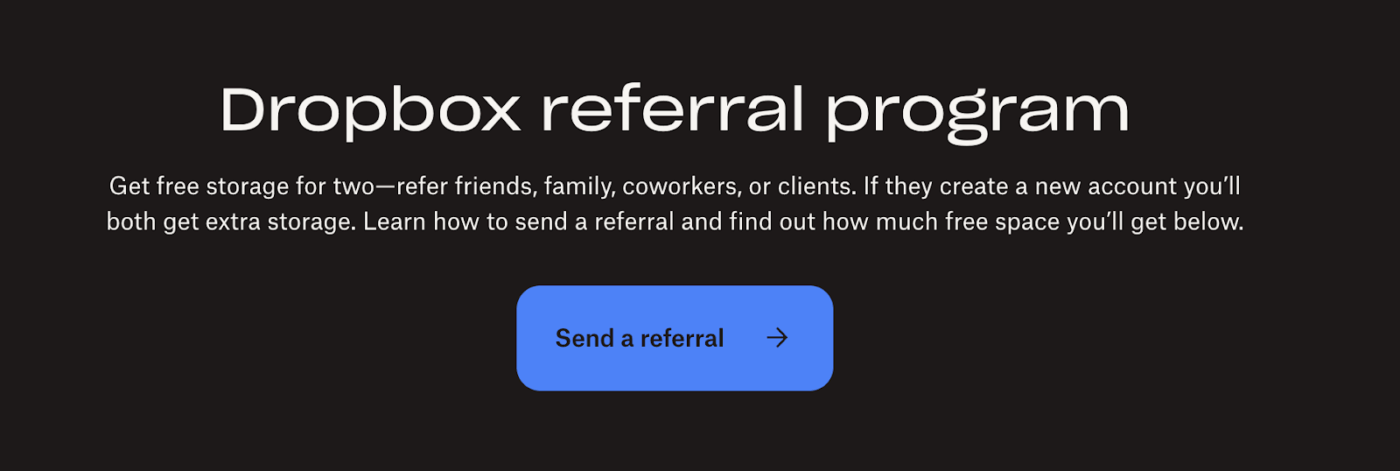
A targeted field marketing strategy builds trust and brand stickiness with high-value accounts in ways digital channels can’t. These micro-events create memorable moments and surface deeper pain points through intimate dialogues that can then be amplified on social media platforms.
They also generate rich qualitative insights for messaging and product development that can help your message stand out in crowded inboxes. When synced with CRM and marketing automation, they become repeatable accelerators for pipeline velocity.
📌 Example
Bloomreach runs exclusive one-to-few account-based marketing (ABM) events—whiskey tastings and cookie-decorating workshops—for target accounts, using Goldcast to manage invites and follow-ups. The many attendees booking sales meetings afterward indicate that these curated experiences strengthen relationships and advance pipeline velocity.
Strategic A/B testing helps businesses discover what messaging or design works best. By testing small changes, brands can boost conversions without guessing. It’s a simple way to learn what drives users to take action and improve results fast.
📌 Example

Going used A/B testing to compare two sign-up messages on their landing page. The version promoting the free premium trial led to a 104% increase in conversions. This simple test helped the company boost sign-ups and revenue. It’s a clear win for Going and a clever use of easy A/B testing.
💡 Pro Tip: Marketing campaign templates codify best practices, such as naming conventions, budget pacing, and targeting criteria, so new campaigns spin up in minutes, not days. Use set templates to compare channel performance and pivot accordingly.
Launching micro-campaigns is a smart way to test your idea without spending much. Instead of guessing what works, you run a small, targeted campaign to see how real people respond. If it clicks, you scale.
If not, you adjust fast. One well-timed video campaign did precisely this and sparked a brand that later sold for over a billion dollars.
📌 Example
Dollar Shave Club first tested humor and value angles with tiny Facebook ads before filming its launch as a DIY video. CEO Michael Dubin spent $4,500 shooting the 90-second spot in one day. Within 48 hours, the site had 12,000 orders, crashing under traffic. The viral proof attracted funding and ultimately a $1 billion Unilever acquisition four years later.
📖 Also Read: Free Marketing Campaign Templates
Building a marketing productivity metrics framework tied to marketing KPIs ensures you connect activities to business outcomes instead of vanity metrics.
An early investment in marketing software helps build a structure for your marketing execution and improves team productivity.
ClickUp serves as the central nervous system for marketing teams by connecting planning, creation, tracking, and collaboration in one platform.
💡Pro Tip: ClickUp for Startups helps small and scaling teams automate workflows, manage campaigns, and track search engine rankings and real-time performance to fuel sustainable growth.
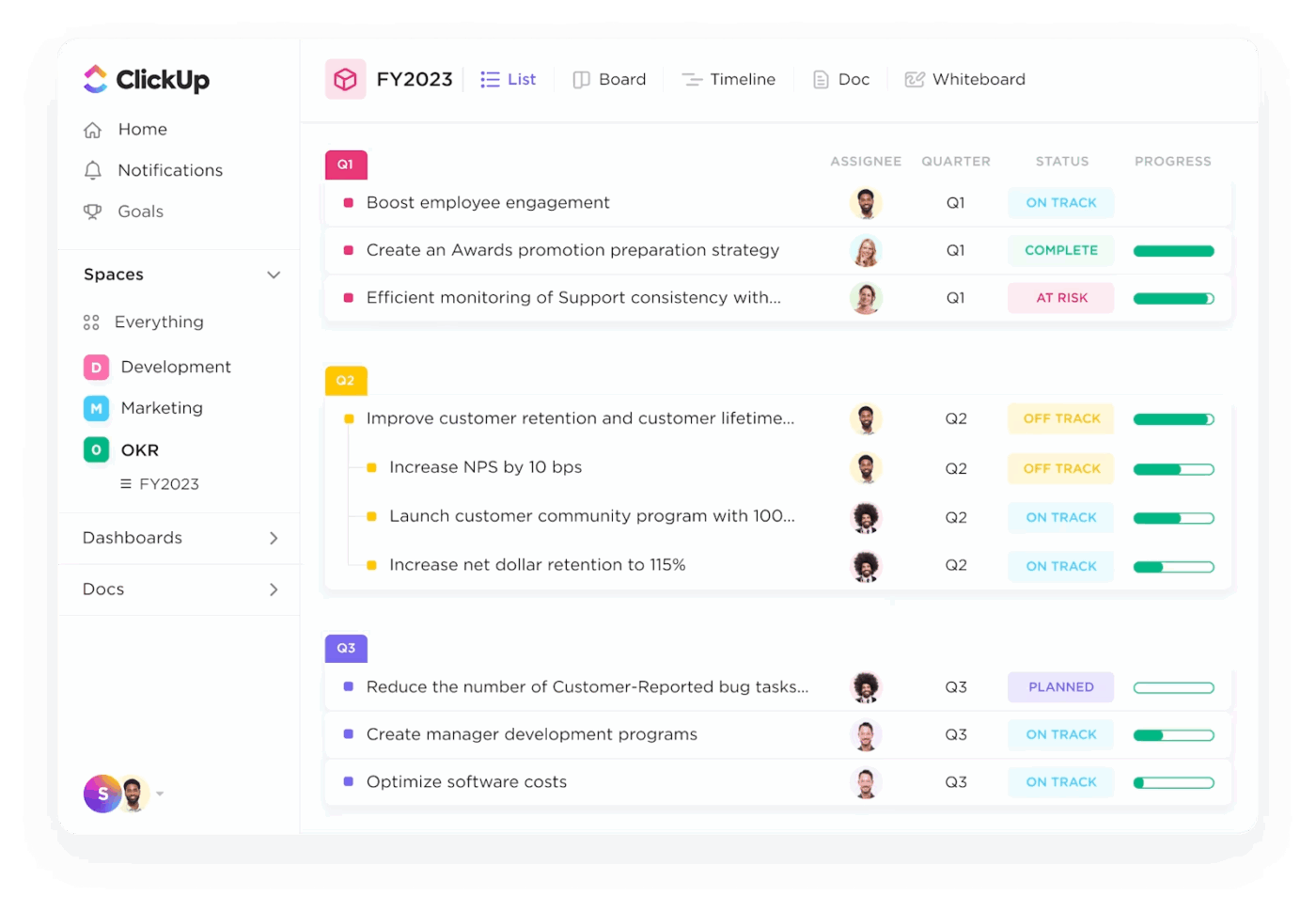
Focus an early-stage marketing plan on 10-20 accounts that would prove product-market fit. Treat each target like a market of one. ABM concentrates the limited budget where the win probability and contract value are highest. Early logos then fuel social proof and pricing power.
📌 Example
Snowflake adopted a targeted ABM strategy for their outbound marketing efforts, beginning with 2,500 named enterprises. Using data enrichment, they enhanced their account coverage while also improving lead-to-opportunity conversions.
Snowflake’s internal AI model then prioritized “high-propensity” accounts. It delivered a 2.3X lift in booked meetings while spending 38% less on ads. Tactics ranged from custom landing pages to executive dinners, making prospects feel like partners and helping pave Snowflake’s record-setting software IPO.
🧠 Fun Fact: 90% of social media marketers believe that social apps will be the primary point of purchase in the near future, outranking websites and third-party platforms.
Teaming up with brands that complement your own is a powerful way for startups to reach new audiences without a massive ad budget.
Successful partnerships through joint webinars, co-branded content, organic social media marketing, or bundled deals hinge on genuine alignment of values and voice. When you find the right fit, you both lend credibility to each other.
These collaborations provide startups with network access and trust, while established partners gain innovation and user-generated content.
📌 Example
A standout example of this approach in action is the Uber–Spotify partnership. This collaboration allowed Uber riders to personalize their cab rides by streaming their own Spotify playlists during trips.
For Uber, it enhanced the rider experience and set it apart in a competitive ride‑hailing market. For Spotify, the integration exposed its platform to new audiences—many of whom may not have been active users previously.
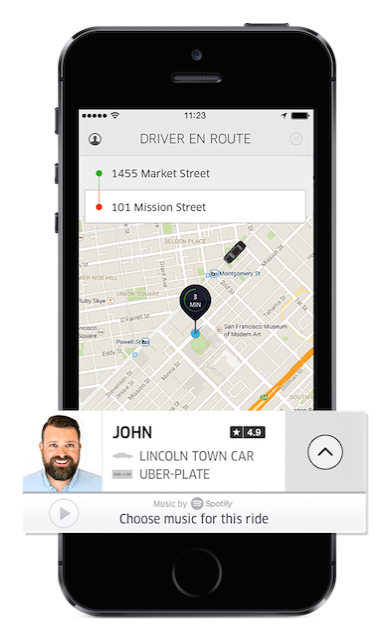
📖 Also Read: Best Enterprise Marketing Automation Software
ClickUp, the everything app for work, unifies planning, execution, and measurement—transforming disparate tools into a single, powerful workspace.
ClickUp for Marketing Teams empowers founders and early-stage marketers to drive rapid, data-backed growth. Plan efficient campaign workflows, automate repetitive tasks, and gain real-time insights to overcome common startup hurdles.
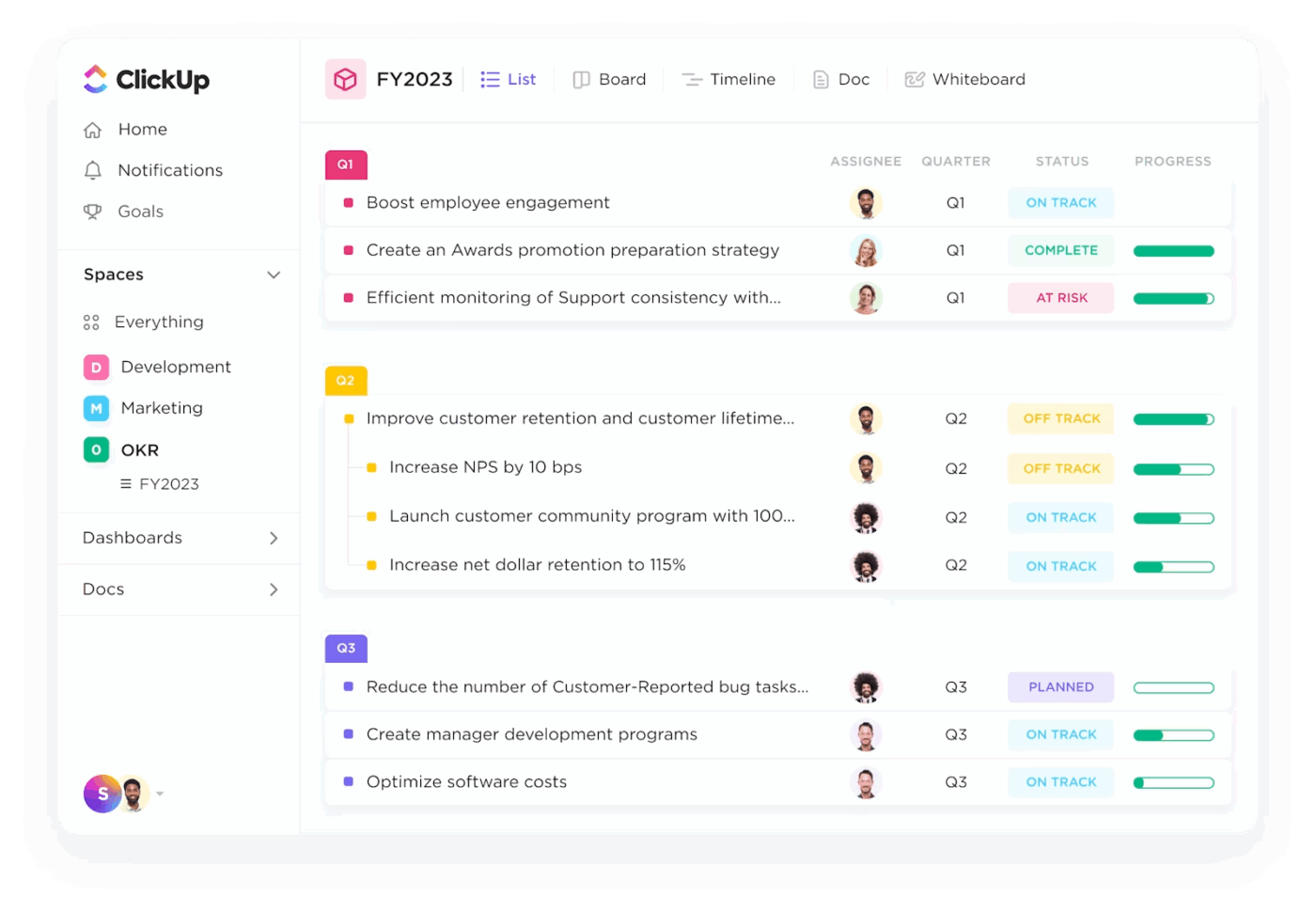
ClickUp’s hierarchy of Spaces, Folders, and Lists gives startup marketers a transparent view of every campaign while aligning cross-functional efforts.
⚡️Bonus: Find best practices in our expert project management for startups guide
With ClickUp, teams can set and monitor KPIs and make data-driven decisions without bouncing between tools.


Marketers can use ClickUp’s team collaboration features to boost creativity, alignment, and execution speed.
ClickUp Brain brings AI directly into your workflow—automate tasks, draft content, analyze marketing data for insights, and make smarter decisions without ever leaving your workspace.
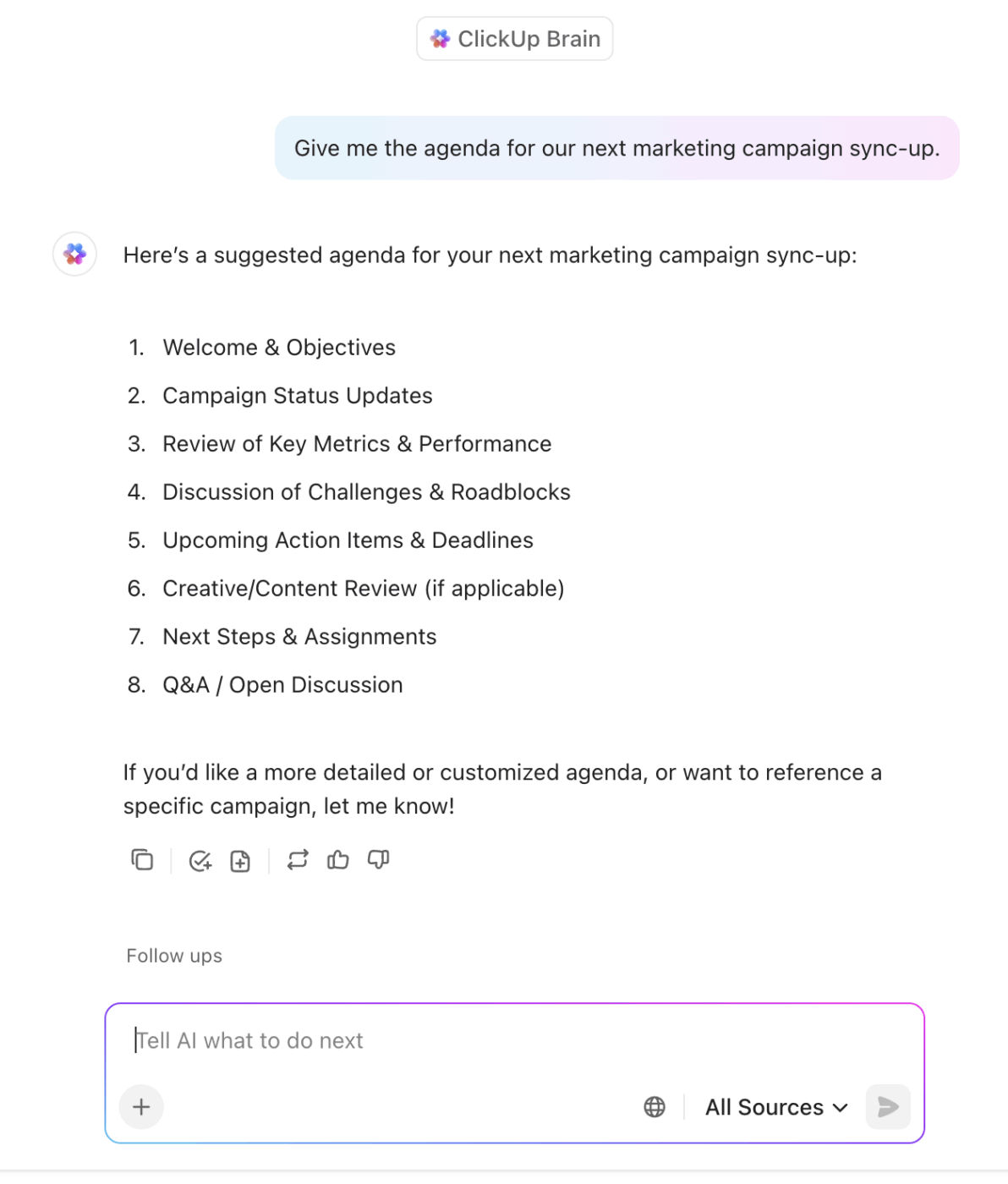
🦄 Bonus: Ready to empower your workforce to lead the new digital workplace? Try ClickUp Brain MAX.

⚡️Bonus: Learn more about using AI tools for startups
👀 Did You Know? A survey by BCG showed that 71% of CMOs plan to invest over $10 million in AI in 2025—up from 57% the prior year.
The ClickUp Strategic Marketing Plan Template consolidates your objectives, budget, and channel roadmap into a single plan. It keeps every stakeholder aligned on goals and timelines.
Use this template to:
The ClickUp Marketing Campaign Management Template keeps every campaign asset, task, and approval workflow in one place. It eliminates bottlenecks and ensures consistent brand messaging.
Use this template to:
Startups often hit roadblocks when marketing on tight budgets and limited time. Here are six key challenges new businesses face and solutions to overcome them:
Tight marketing budgets make scaling ad programs difficult. However, plenty of marketing strategies are available to bootstrapped startups, too.
Way forward:
Without visibility, potential customers won’t find you. Craft a clear product marketing strategy that sharpens your value proposition and messaging.
Way forward:
Small teams juggle core duties and marketing tasks. Putting systems and processes in place can help you overcome this challenge.
Way forward:
💡Pro Tip: ClickUp’s AI tools can help streamline production workflows. This quick video tells you how!
Without clear marketing KPIs, campaigns drift.
Way forward:
Poor targeting wastes resources and messaging. To resonate with your prospects, you must be speaking their language.
Way forward:
Inconsistent publishing can harm audience interest and negatively impact SEO rankings.
Way forward:
A winning marketing strategy equips your startup with the focus to reach the right audience, the agility to test and iterate, and the insights to optimize every campaign.
Marketing strategy development for early-stage startups involves a careful balance of long- and short-term actions. From crafting compelling value propositions for new customers to optimizing social media marketing channels, each tactic in this guide drives cost-effective growth.
Use ClickUp to centralize your strategic marketing plan, seamlessly manage multi-channel campaigns, and track critical KPIs. Leverage templates, automated workflows, and ClickUp Brain to save time, share transparent goals to align teams, and measure success in real time.
Sign up for ClickUp today!
© 2025 ClickUp